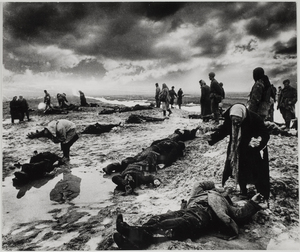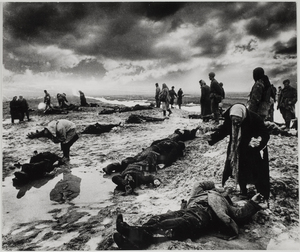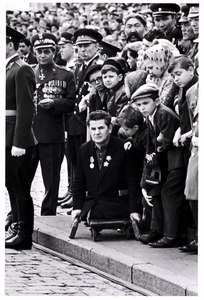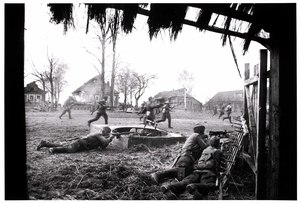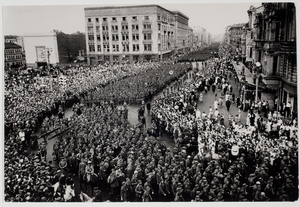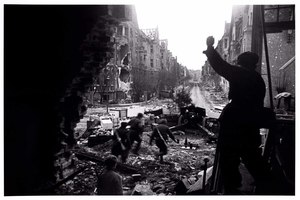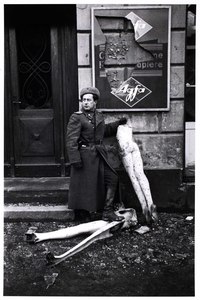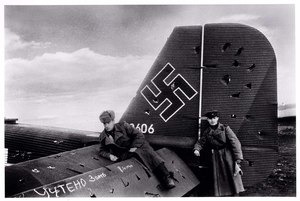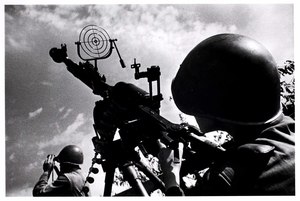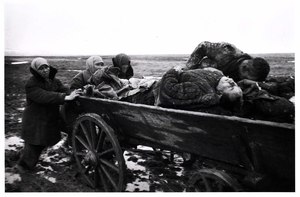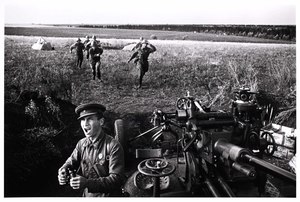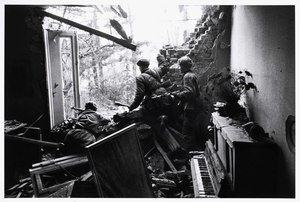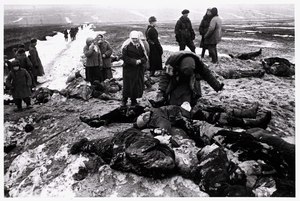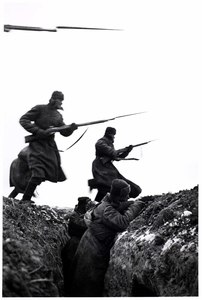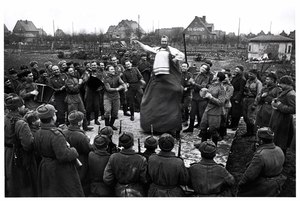Born in Warsaw (then part of the Russian Empire), Dmitrii Baltermants moved to Moscow with his mother when he was two and left secondary school in the mid-1920s in order to work. After stints as a metal grinder, copy editor, and cinema mechanic, he was hired as an apprentice printer at the Izvestia Printing House, which sent him to study at Moscow State University. He earned a degree in mechanical mathematics and was assigned to teach at a military academy in 1939; shortly thereafter, the paper Izvestia called him to cover the Soviet invasion of Poland. Having taught himself photography while a student, Baltermants had been making pictures since 1936, and his photographs from the Polish invasion led to a career in photojournalism. As a photographer with the Red Army, he covered major events of World War II, including battles outside Moscow in November 1941 and in the eastern Crimea during the winter of 1942. It was then that he made his most famous photograph, Grief, which depicts family members mourning soldiers massacred during a German retreat. Because the Soviet press wanted only positive pictures of war, which suggested impending victory for the Soviet Union, this photograph, and others--including An Attack--were not seen until more than twenty years later. After the war, and until his death in 1990, Baltermants worked as a staff photographer in Moscow for the illustrated magazine Ogonyok.
Although famous as a war correspondent, Baltermants was an avowed pacifist. His photographs often reveal the disastrous and sorrowful effects of war rather than individual feats of heroism. His images capturing the reality and immediacy of historical events provide insight into the quality and character of Soviet photojournalism during this century.
Lisa Hostetler
Handy et al. Reflections in a Glass Eye: Works from the International Center of Photography Collection, New York: Bulfinch Press in association with the International Center of Photography, 1999, p. 207.



